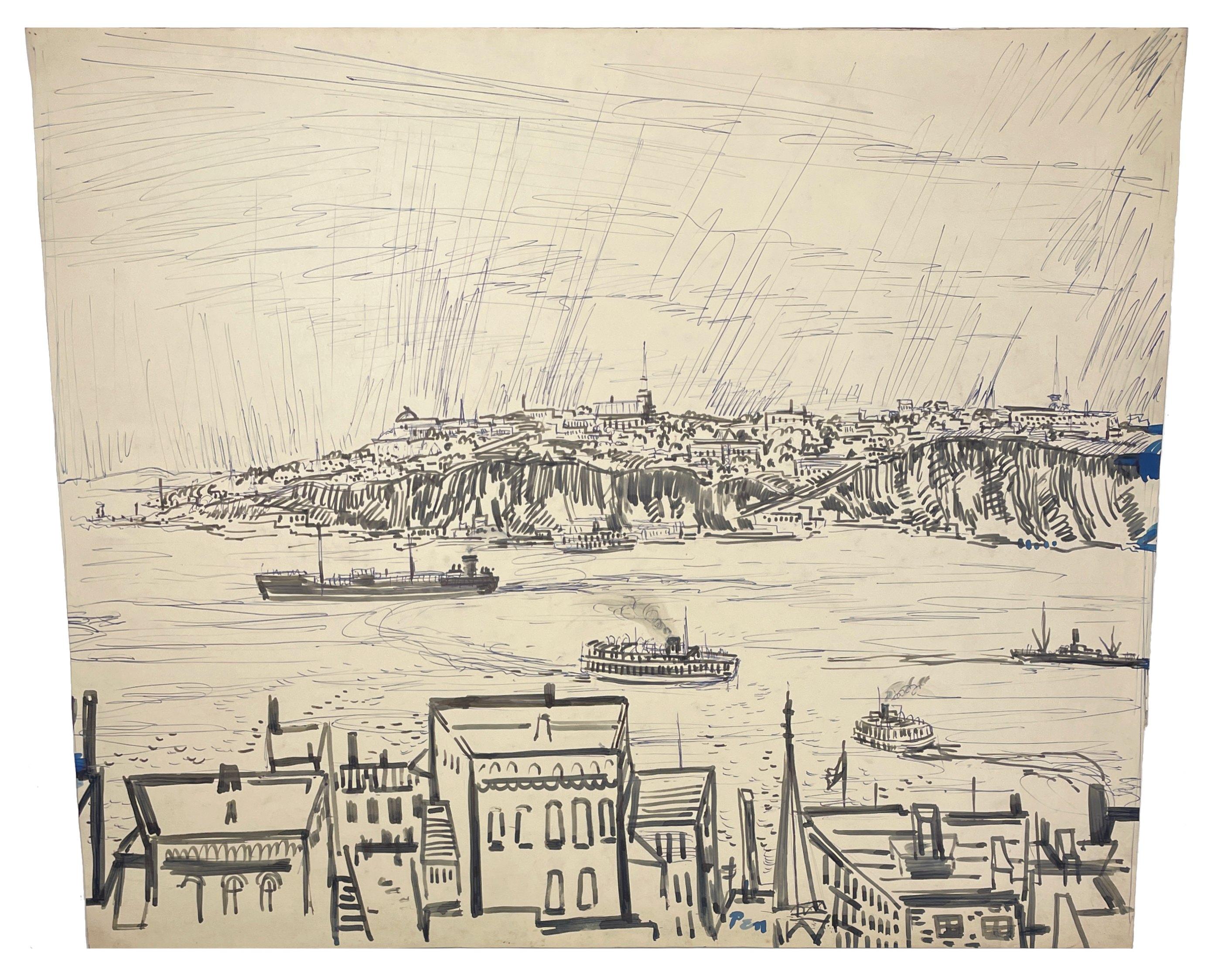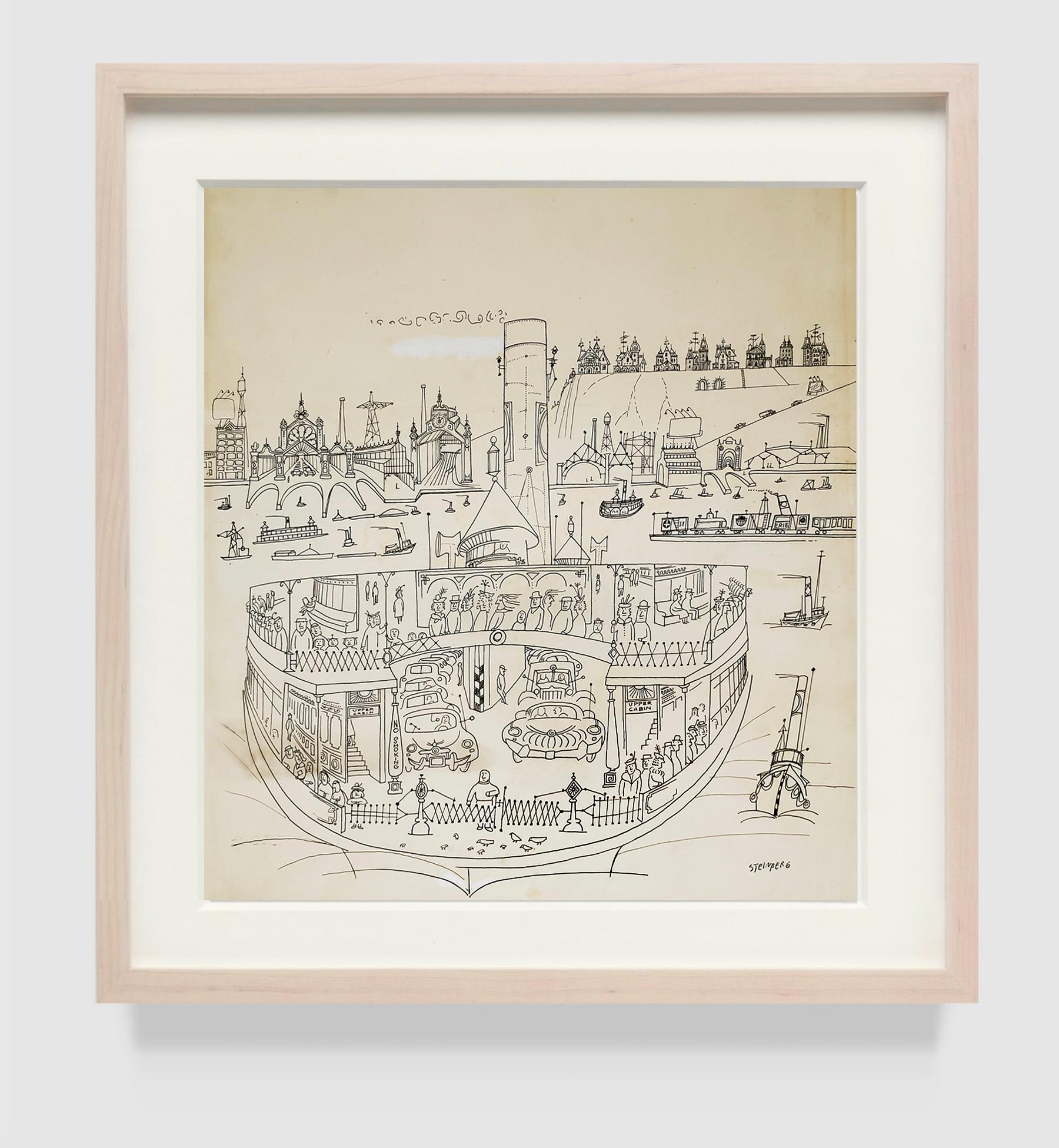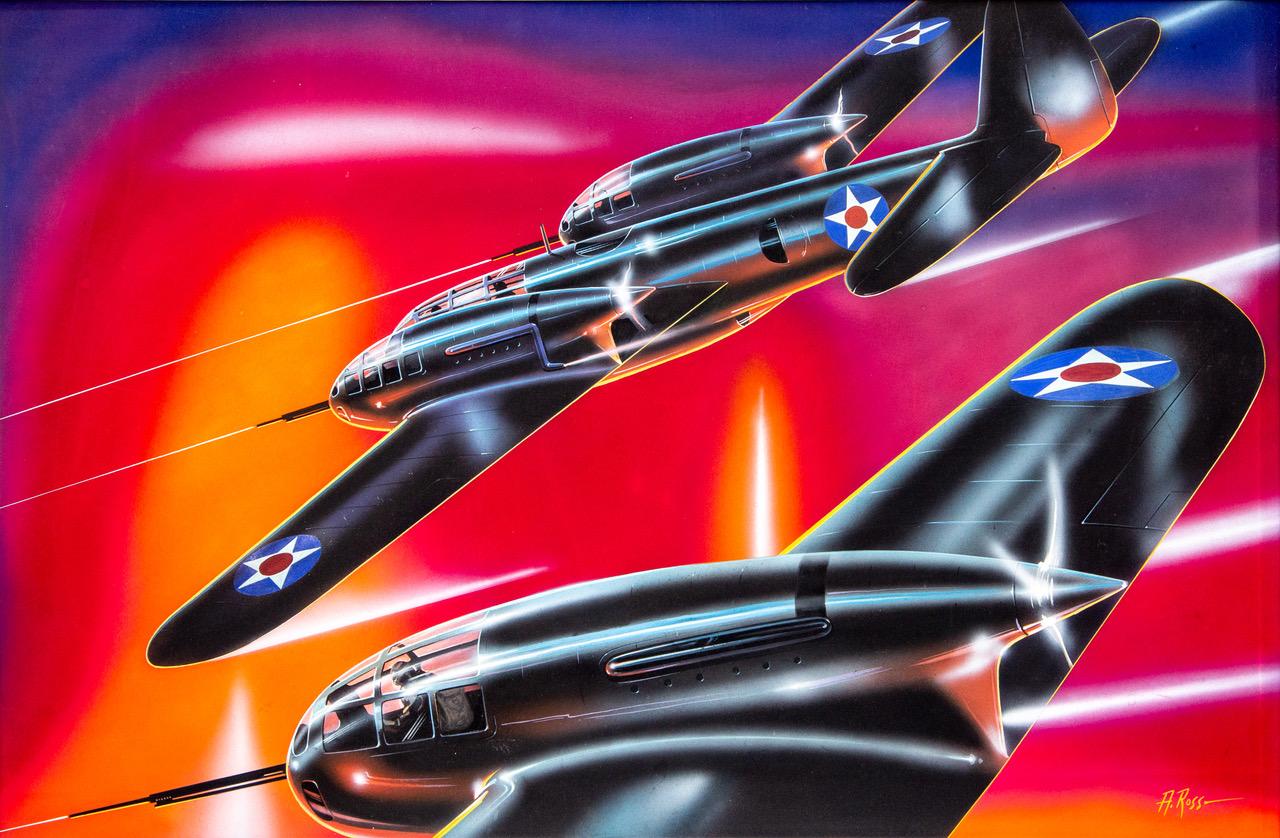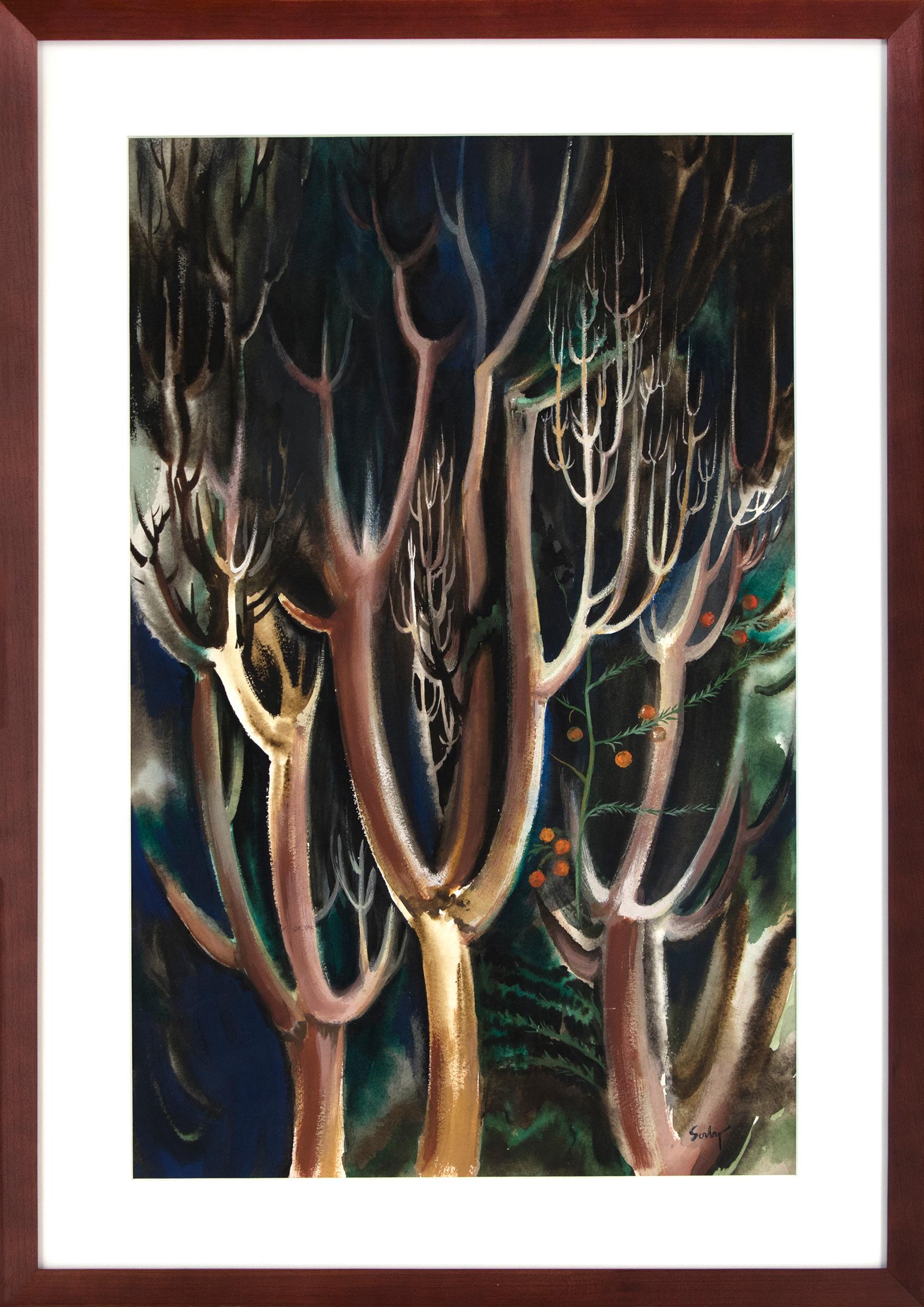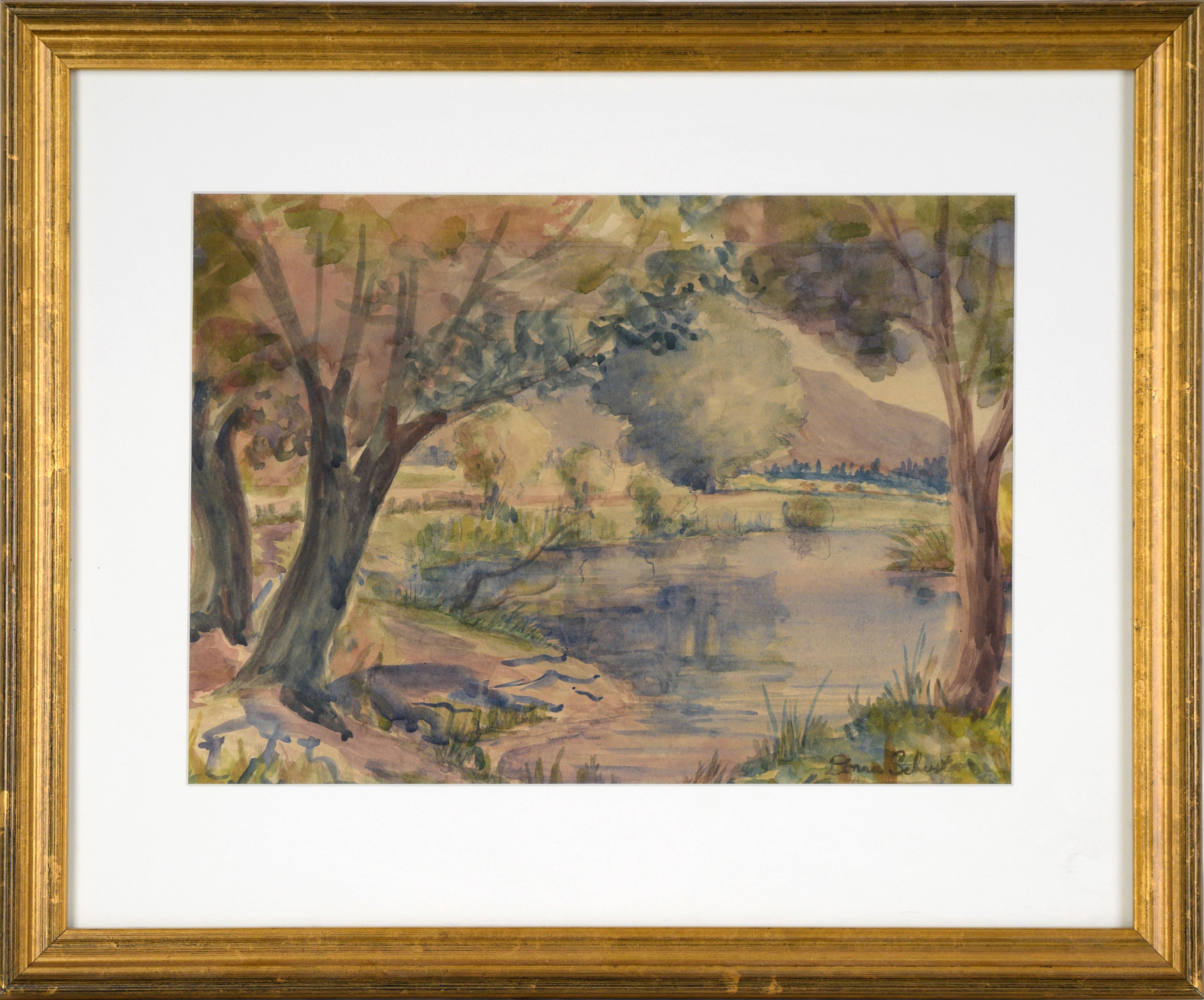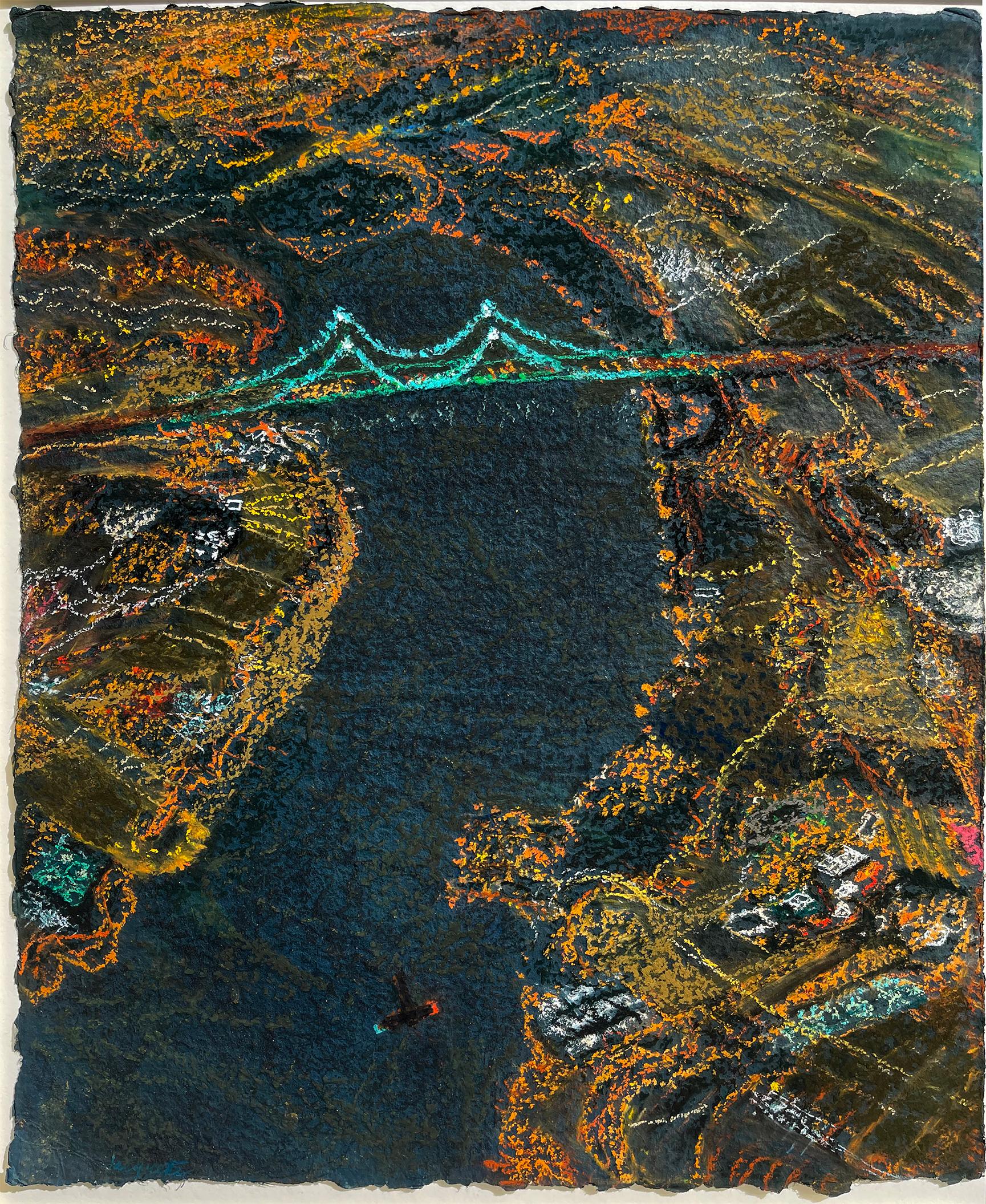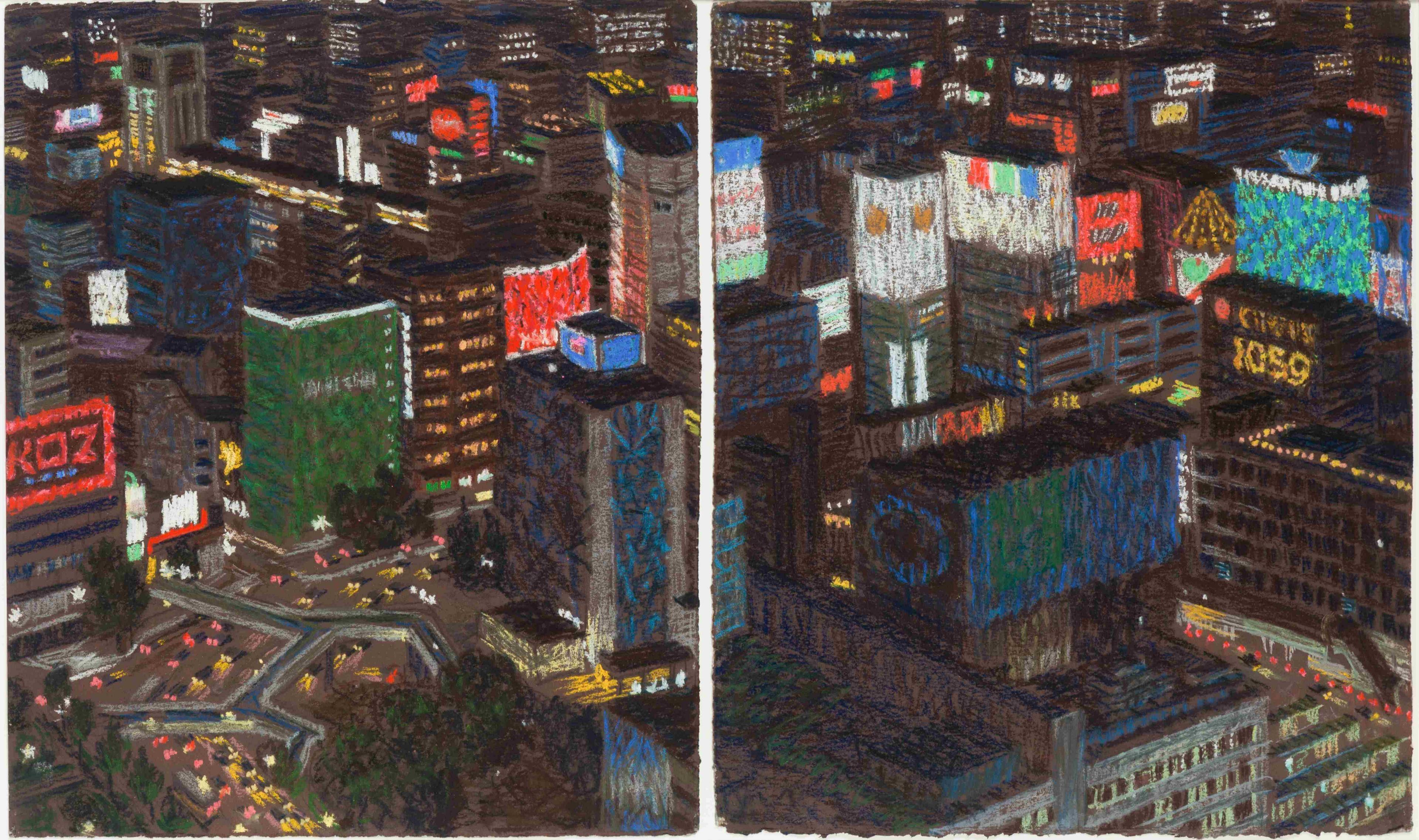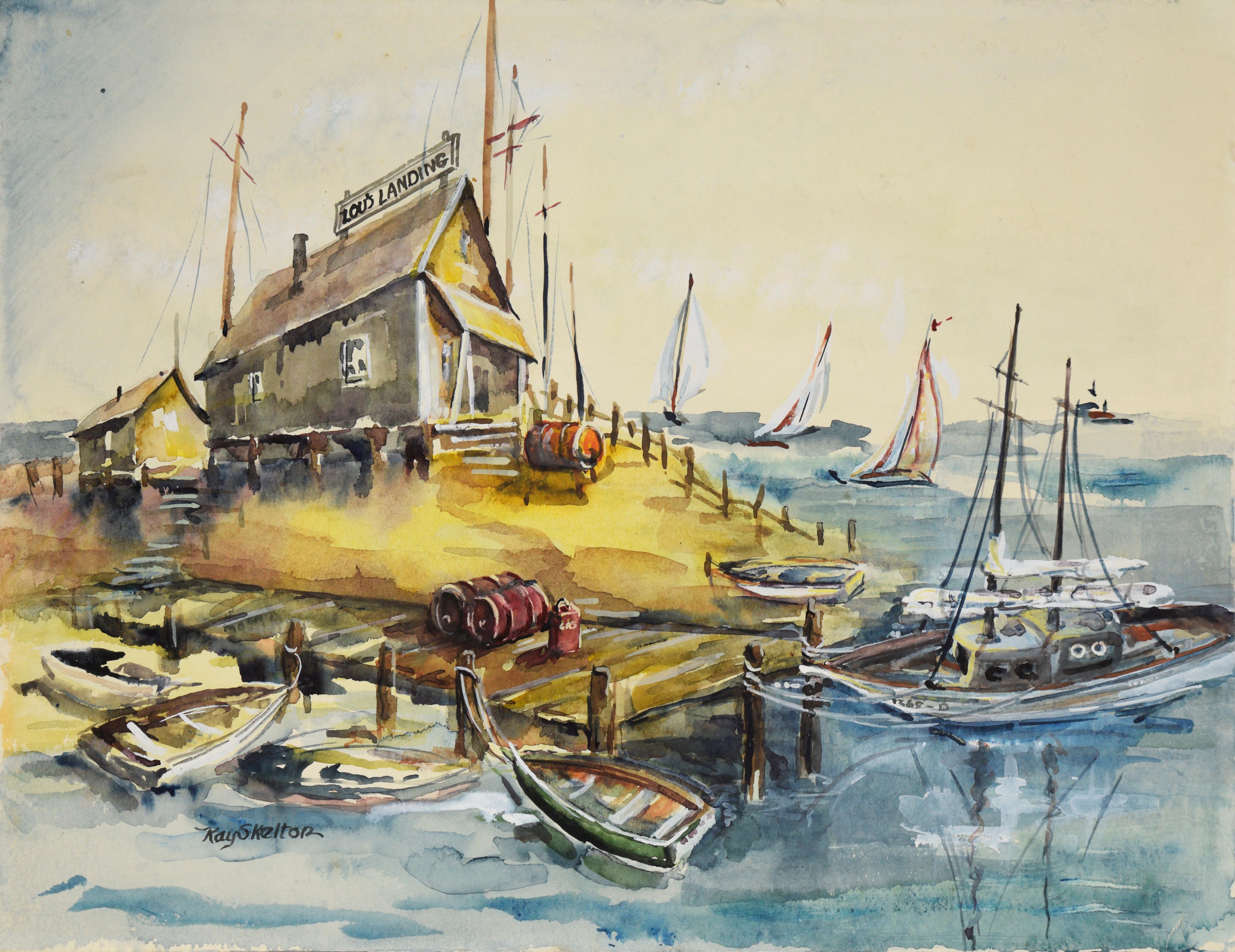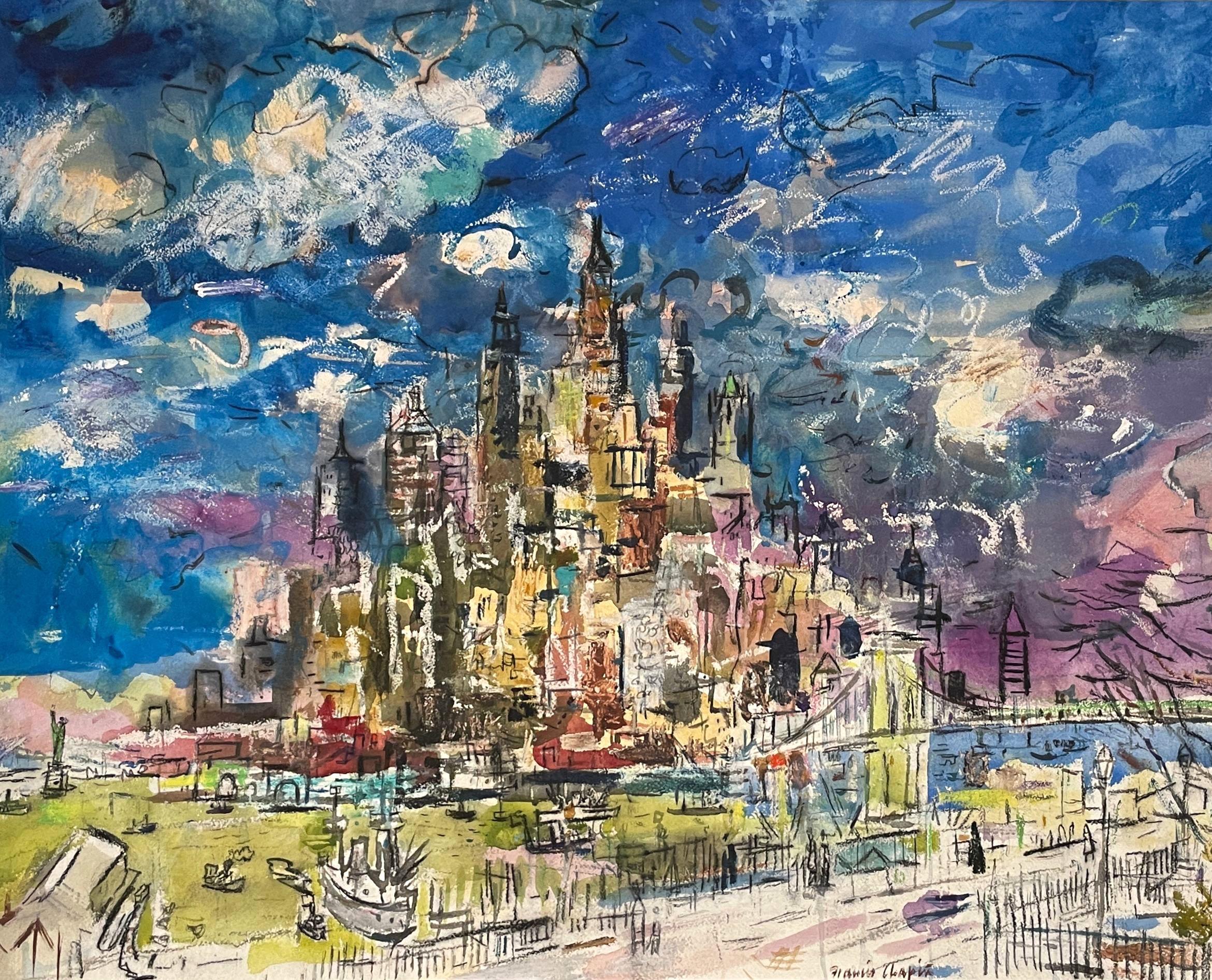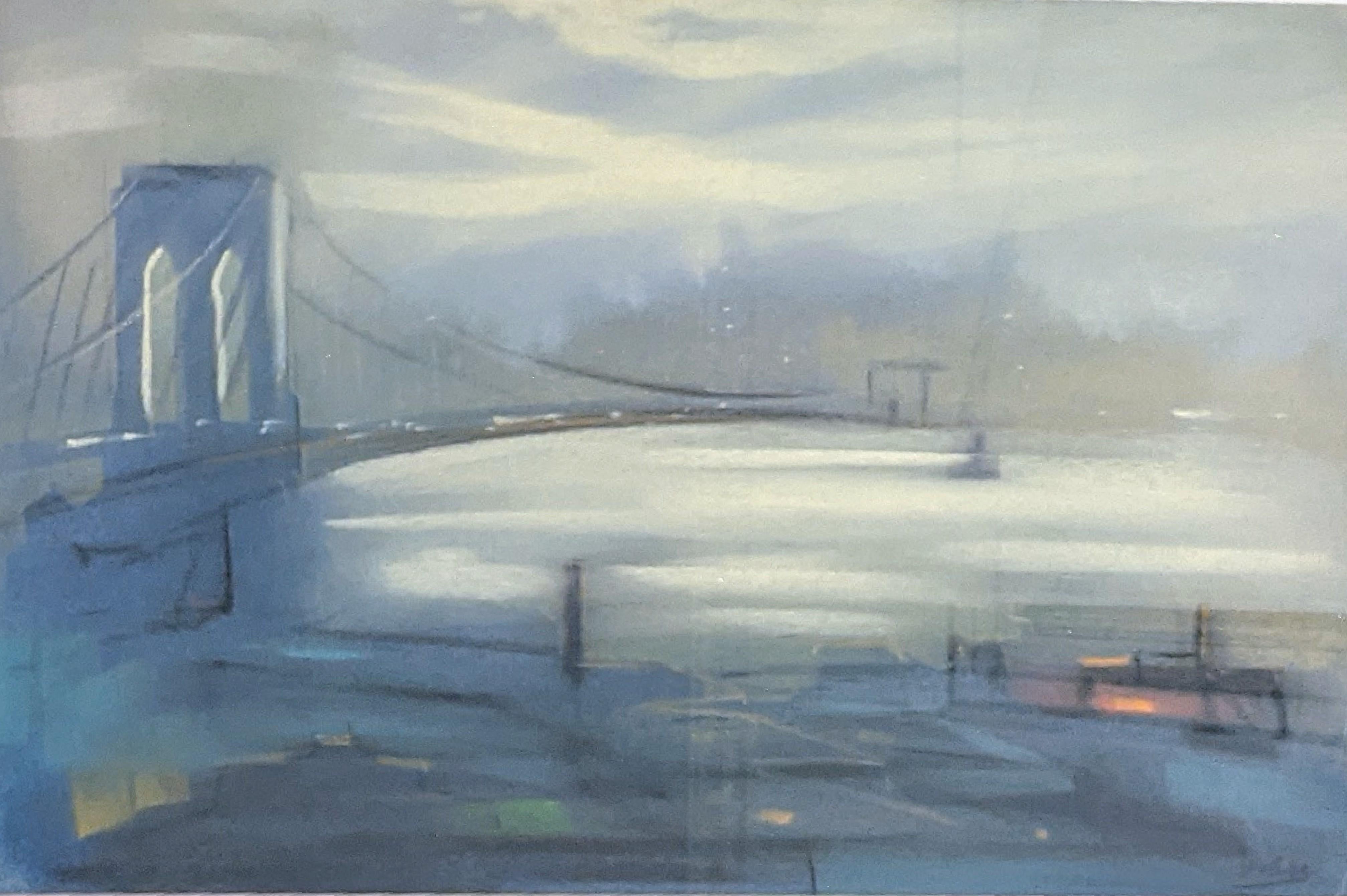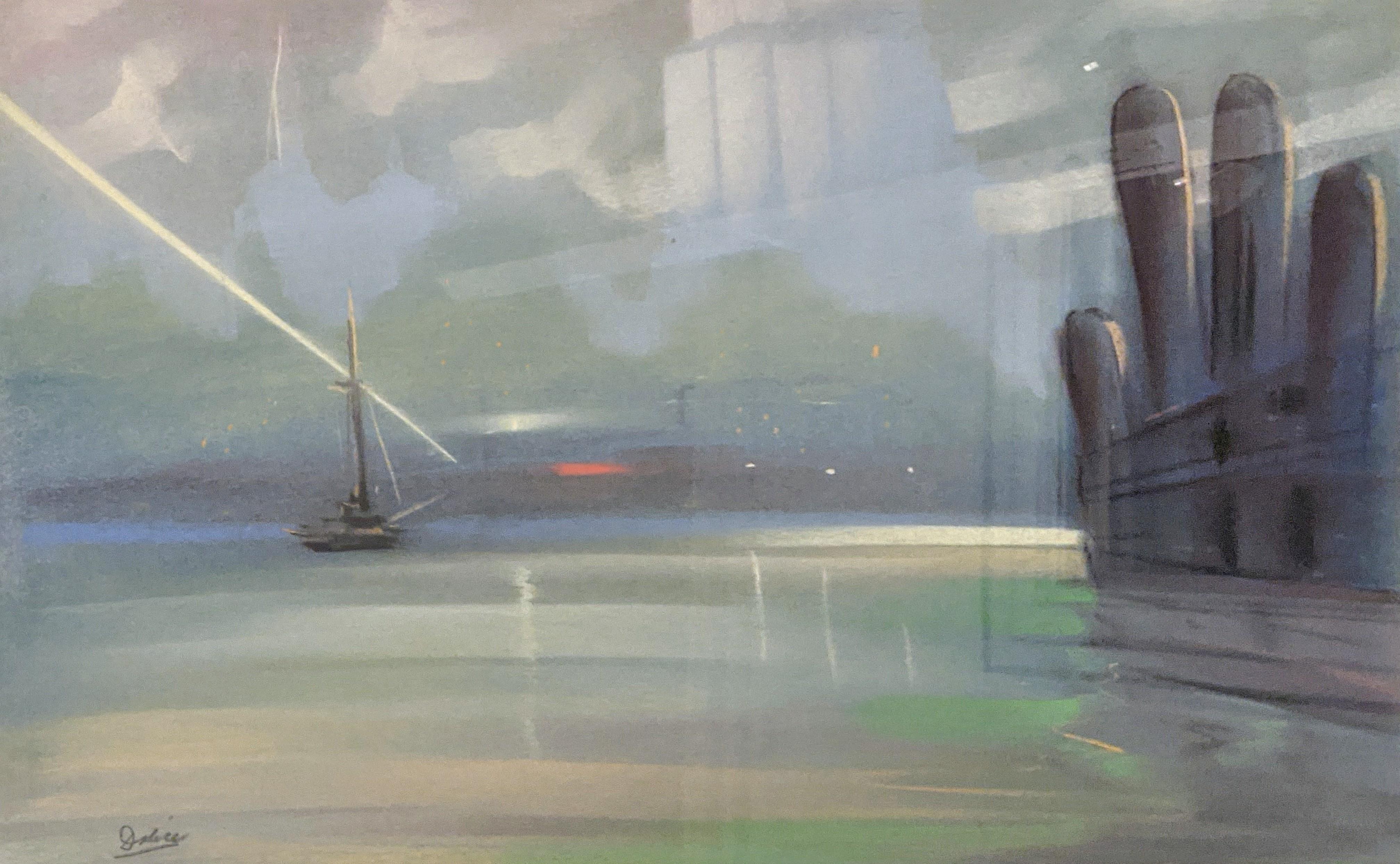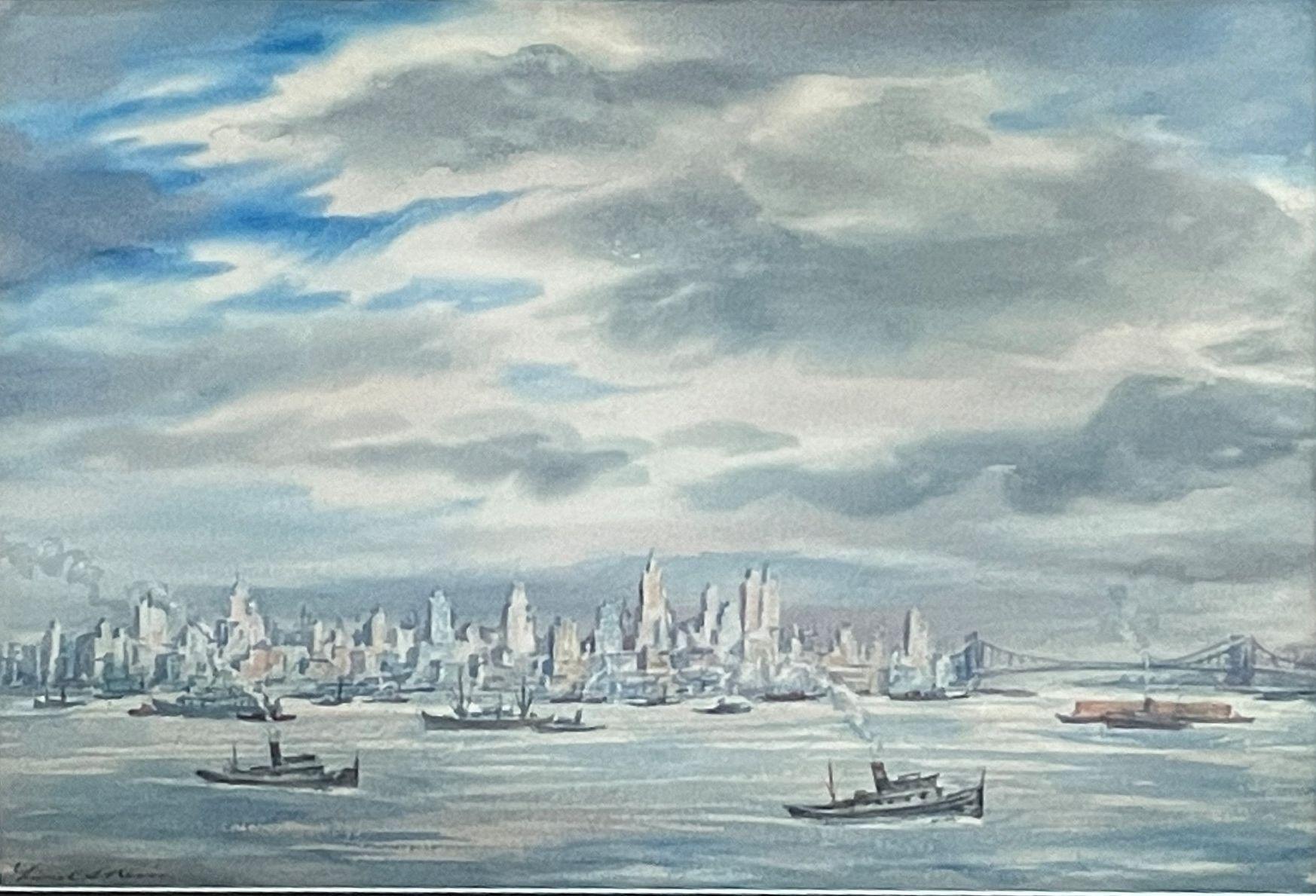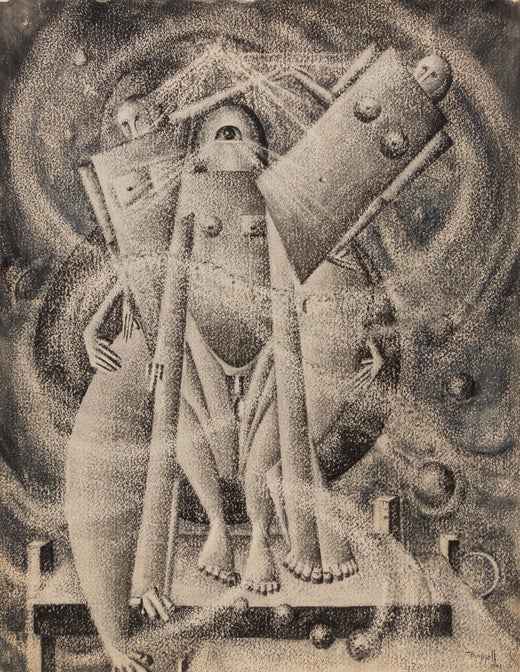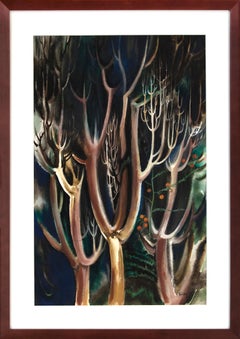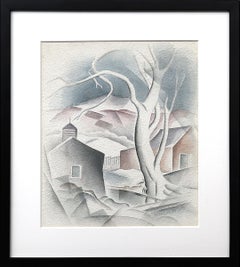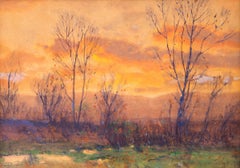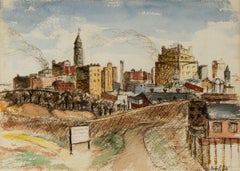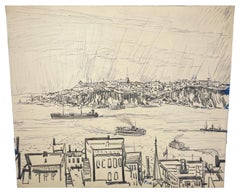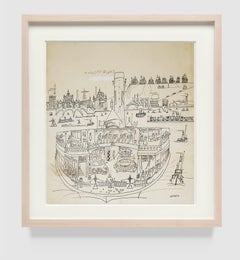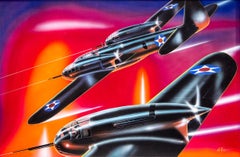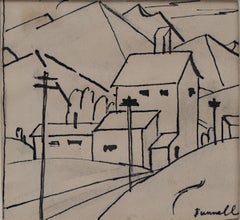
Untitled (Study of a Mountain Town, Colorado)
View Similar Items
Want more images or videos?
Request additional images or videos from the seller
1 of 8
Charles Ragland BunnellUntitled (Study of a Mountain Town, Colorado)circa 1935
circa 1935
$750List Price
About the Item
- Creator:Charles Ragland Bunnell (1897-1968, American)
- Creation Year:circa 1935
- Dimensions:Height: 11.5 in (29.21 cm)Width: 9.5 in (24.13 cm)Depth: 0.75 in (1.91 cm)
- Medium:
- Movement & Style:
- Period:
- Condition:very good vintage condition.
- Gallery Location:Denver, CO
- Reference Number:Seller: DCG-47061stDibs: LU2735478552
Charles Ragland Bunnell
Charles Bunnell developed a love for art at a very young age. As a child in Kansas City, Missouri, he spent much of his time drawing. When he was unable to find paper he drew on walls and in the margins of textbooks for which he was often fined. Around 1915, Bunnell moved with his family to Colorado Springs, Colorado. He served in World War I and later used his GI Training to study at the Broadmoor Art Academy (later renamed the Colorado Springs Fine Arts Center) during 1922 and 1923. In 1922, he married fellow student, Laura Palmer. He studied with Ernest Lawson in 1927-1928 and, in the winter of 1928-1929, he served as Lawson’s assistant. In the late 1920’s, the Bunnell’s settled just west of Colorado Springs and 1928, they welcomed the first of their three children. Their one-acre homesite, which they referred to as “Old Home Place”, was situated between two sets of railroad tracks at the foot of Pike’s Peak. Charlie converted an old railroad boxcar into his studio, where he later gave lessons. Beginning in 1931, Bunnell spent a year and a half studying under Boardman Robinson. The two men clashed constantly due to a generation gap and markedly different philosophies. Robinson encouraged his students not to stray from realism and though Bunnell mastered Robinson’s preferred style of American Scene painting, he regularly irritated his professor with his abstract sketches. Bunnell taught at the Kansas City Art Institute during the summers of 1929, 1930, 1940, and 1941. Between 1934 and 1941, he painted and taught under federal projects which included assisting Frank Mechau on murals for the Colorado Springs Post Office. However, he did not take to mural making and, after criticism from Boardman Robinson about his use of “heavy daubs which have no place in mural work,” he abandoned mural-making altogether. By the late 1930’s, Bunnell’s work departed from the American Scene/Modernist style he was trained in towards abstraction. This is marked by his “Black and Blue” series, consisting of 83 abstracted ink and watercolors. Affected by the Second World War and the loss of his 10-year old son, Bunnell’s work of the early 1940’s took on a Transcendental and Surrealist tone. The works from this period are moody and readily reflect the political and personal turmoil experienced by the artist. In the late 1940’s, Bunnell began experimenting with Abstract Expressionism. He alone is credited with introducing Colorado Springs to the new style as it was excluded from the Fine Art Center’s curriculum by Boardman Robinson. Bunnell excelled in Abstract Expressionism and continued to evolve in the style through the 1950’s continuing to his death in 1968. He was recently recognized as a premier American Abstract Expressionist by his inclusion in the book American Abstract Expressionism of the 1950’s: An Illustrated Survey. © David Cook Galleries, LLC
About the Seller
5.0
Gold Seller
Premium sellers maintaining a 4.3+ rating and 24-hour response times
Established in 1979
1stDibs seller since 2013
290 sales on 1stDibs
Typical response time: 13 hours
Authenticity Guarantee
In the unlikely event there’s an issue with an item’s authenticity, contact us within 1 year for a full refund. DetailsMoney-Back Guarantee
If your item is not as described, is damaged in transit, or does not arrive, contact us within 7 days for a full refund. Details24-Hour Cancellation
You have a 24-hour grace period in which to reconsider your purchase, with no questions asked.Vetted Professional Sellers
Our world-class sellers must adhere to strict standards for service and quality, maintaining the integrity of our listings.Price-Match Guarantee
If you find that a seller listed the same item for a lower price elsewhere, we’ll match it.Trusted Global Delivery
Our best-in-class carrier network provides specialized shipping options worldwide, including custom delivery.More From This Seller
View All1940s Modernist Trees Watercolor Painting, Framed Vertical Earth Tone Landscape
By Richard Sorby
Located in Denver, CO
This captivating Modernist watercolor painting of a serene forest scene by Richard Sorby (1911-2001) beautifully captures the essence of nature through a minimalist and expressive lens. Painted in the 1940s, the piece features stylized trees in bold, dark hues of green, blue, and black, complemented by earthy tones of brown, orange, and white. The watercolor on paper is signed by the artist in the lower right corner and beautifully framed with archival materials. The outer dimensions of the piece measure 26 ½ x 18 ½ x 1 inches, with the image size itself being 22 ¾ x 14 ¾ inches.
About the Artist:
Richard Sorby, a Colorado-based artist, was renowned for his distinctive modernist style, blending abstraction with representational themes. Sorby earned his Bachelor of Fine Arts degree from Colorado State College of Education (now the University of Northern Colorado) in 1937 and went on to study under influential mentors, including Vance Kirkland and William Joseph Eastman...
Category
1940s American Modern Landscape Drawings and Watercolors
Materials
Watercolor, Archival Paper
1930s American Modernist Colorado Winter Landscape Watercolor, Trees, Mountains
Located in Denver, CO
This 1938 watercolor painting by American Modernist artist Turner B. Messick depicts a serene winter landscape, likely set in Colorado. The scene features a bare tree in the foregrou...
Category
1930s American Modern Landscape Paintings
Materials
Watercolor
Sunset Along the Front Range, Colorado, 1900s Traditional Landscape Painting
By Charles Partridge Adams
Located in Denver, CO
This stunning, original signed landscape painting by Charles Partridge Adams (1858-1942) captures the breathtaking beauty of a Colorado sunset along the Front Range, near Denver. The...
Category
Early 20th Century Hudson River School Landscape Drawings and Watercolors
Materials
Watercolor
1950s Denver Skyline Painting – Graphite & Watercolor Colorado Cityscape Art
Located in Denver, CO
A captivating midcentury cityscape titled "Denver Skyline", this original 1950s watercolor and graphite painting offers a rare industrial-era view of lower downtown Denver, Colorado....
Category
1950s American Impressionist Landscape Paintings
Materials
Watercolor, Graphite
19th Century 1925 California Coast Marine Landscape Watercolor, Rocks & Waves
By Charles Partridge Adams
Located in Denver, CO
American Impressionist California coastal watercolor painting by Charles Partridge Adams (1858-1942), circa 1925. This stunning piece captures the beauty of the coastline with vibran...
Category
1920s American Impressionist Landscape Paintings
Materials
Watercolor
1940s Western Landscape of Silver Plume, Colorado, Framed Oil Pastel Drawing
By Elsie Haddon Haynes
Located in Denver, CO
A captivating early 20th-century Western mountain landscape by Colorado artist Elsie Haddon Haynes (1884–1963), this original oil pastel drawing captures the charming town of Silver Plume...
Category
1930s American Impressionist Landscape Drawings and Watercolors
Materials
Oil Pastel
You May Also Like
A Large, 1950s Mid-Century Modern Ink Drawing of Quebec City by Rudolph Pen
Located in Chicago, IL
A Large, 1950s Mid-Century Modern Ink Drawing of Quebec City by Rudolph Pen. Artwork is formatted in a trapezoid shape, an innovative composition device for which the artist's work ...
Category
Mid-20th Century American Modern Landscape Drawings and Watercolors
Materials
Paper, Ink
New York Harbor with Ferry boats and Victorian Houses - Holiday Magazine Cover
By Saul Steinberg
Located in Miami, FL
Steinberg's Holiday Magazine Cover, " The North of Jersey " is similar to his famous New Yorker Cover "View of the World from 9th Avenue”. ...
Category
1950s American Modern Landscape Drawings and Watercolors
Materials
India Ink, Gouache
Airacuda Fighter Planes Art Deco Machine Age 20th Century American Modernism
Located in New York, NY
Airacuda Fighter Planes Art Deco Machine Age 20th Century American Modernism
Arthur Rosenman Ross (1913 - 1981)
Bell YFM-1 Airacuda Fighter Planes
17 1/2 x 26 1/2 inches
Gouache, Airbrush and Ink on Illustration Board, 1938
Signed A. Ross lower right
Provenance: Estate of the artist.
BIO
Arthur Rosenman Ross was a key figure in automotive design at General Motors during America's "Golden Age" of auto design, the 1930's through the 1950s.
He attended the Art Institute of Chicago from age 17, exhibiting a special interest for automotive renderings and the female figure.
In 1934, he changed his name from Rosenman to Ross, fearing his Jewish ancestry could prejudice his career prospects. At age 20, he turned down job offers from MGM Studios in Hollywood
and Duesenberg to work at General Motors alongside the Legendary Harley Earl in 1935.
He was hand picked by Mr. Earl and assigned to GM's War and Camouflage Division in 1937 through WW2.
It was during this pivotal period in which he executed some extraordinary military aircraft artworks, likely used between GM and America's military aeronautics companies in design preparation for WW2. General Motors played an important role in helping America's aircraft manufacturers preceding and during the war.
Just after the war in 1945, Mr. Ross was rewarded by GM, being made Chief Designer of Cadillac, then two years later becoming Chief at Oldsmobile until his retirement in 1959.
He was in large part responsible for some of GM's classic Cadillac designs such as the Cadillac Sixty Special, Fleetwood, LaSalle and GM's first concept car, the extraordinary Buick Y-Job.
Mr. Ross was an exceptionally charismatic and vivacious man who quite by chance, befriended His idol, Salvador Dali at GM in 1955.
They talked about art, cars and girls late into the evening, according to his son, Carter Ross.
He had a gift in rendering the erotic arts...
Category
1930s American Modern Landscape Drawings and Watercolors
Materials
Ink, Gouache, Board
California Lake Landscape Original Watercolor on Paper
Located in Soquel, CA
California Lake Landscape in Watercolor on Paper
Serene landscape by Donna N. Schuster (American, 1883-1953). The viewer stands at the edge of a lake, under a few trees. At the far ...
Category
Early 20th Century American Modern Landscape Drawings and Watercolors
Materials
Watercolor, Laid Paper
Metropolitan Fantasy - City at Night with Pulsing Lights
By Yvonne Jacquette
Located in Miami, FL
Yvonne Jacquette uses pastel on a heavy rag paper to depict an ariel city scene at night with pulsing lights. There is a heavy texture to the paper and the surface is rich and vibra...
Category
1990s American Modern Landscape Paintings
Materials
Pastel, Rag Paper
"Tokyo Diptych" Yvonne Jacquette, Japanese Urban Cityscape Nocturnal Aerial
By Yvonne Jacquette
Located in New York, NY
Yvonne Jacquette (American, b. 1935)
Tokyo Diptych, 1985
Pastel on paper
Overall 17 1/4 x 28 1/2 inches
Signed lower center
Provenance:
Carey Ellis Company, Houston, Texas
Brooke Alexander, New York
Collection of an American Corporation
Exhibited:
New York, Brooke Alexander, Yvonne Jacquette: Tokyo Nightviews, April 5 - May 3, 1986, n.p., illustrated; this exhibition later traveled to Brunswick, Maine, Bowdoin College Museum of Art, Yvonne Jacquette: Tokyo Nightviews, June 27 - August 24, 1986.
Yvonne Jacquette has a preference for high places, a circling plane, a penthouse window, an aerie from which to watch the world. Her work has often depicted the city and man-made landscape from the vantage of angels. It is a privileged perspective, long loved by photographers, who were perhaps the first to recognize the geometric grandeur of the city below. That grandeur structures Jacquette's images but is not its full content. Her work attempts to resolve the visual and emotional pardoxes of the modern metropolis. Only from the tower is there the possibility of order and context. And unlaced beauty.
Jacquette first visited Japan in 1982. Nighttime Tokyo, its cars and crowds and canyons of loud Vegas neon, made a vivid and bewildering impression on her. The neon signs, pulsing, scaling the walls of high rises, fascinated the artist, "like Times Square spread over miles." Her fascination was equal parts marvel, confusion, and curiosity—the sparks of art. She returned to Tokyo in May of 1985, choosing hotel rooms with expansive vistas. From these views Jacquette excerpted images for a series of pastel night scenes. The basic forms and colors of each drawing were blocked in during night sessions by the window. She worked in the dark, selecting colors by flashlight. In daylight, she sharpened the geometry and corrected ambiguous passages. She refined the drawings further in the studio until the images read clearly. Photographic correctness was not important. The finished drawings are complete statements, not simply preparatory sketches for paintings. They have the authority of expert witness. In clear, discreet jots of pastel they record the performance of seeing, each touch of color attesting to a moment's close scrutiny.
Yvonne Jacquette was born on December 15, 1934 in Pittsburgh, Pennsylvania and grew up in Stamford, Connecticut. She attended the Rhode Island School of Design, Providence from 1952 to 1955, when she moved to New York City. Her late husband was photographer Rudy Burckhardt, and the couple were part of a circle of artist friends that included Fairfield Porter, Alex Katz, Red Grooms, and Mimi Gross. She continues to live and work in New York City, as well as in Searsmont, Maine.
A flight to San Diego in 1969 sparked Jacquette’s interest in aerial views, after which she began flying in commercial airliners to study cloud formations and weather patterns. She soon started sketching and painting the landscape as seen from above, beginning a process that has developed into a defining element of her art. Her first nocturnal painting...
Category
1980s American Modern Landscape Drawings and Watercolors
Materials
Paper, Pastel
